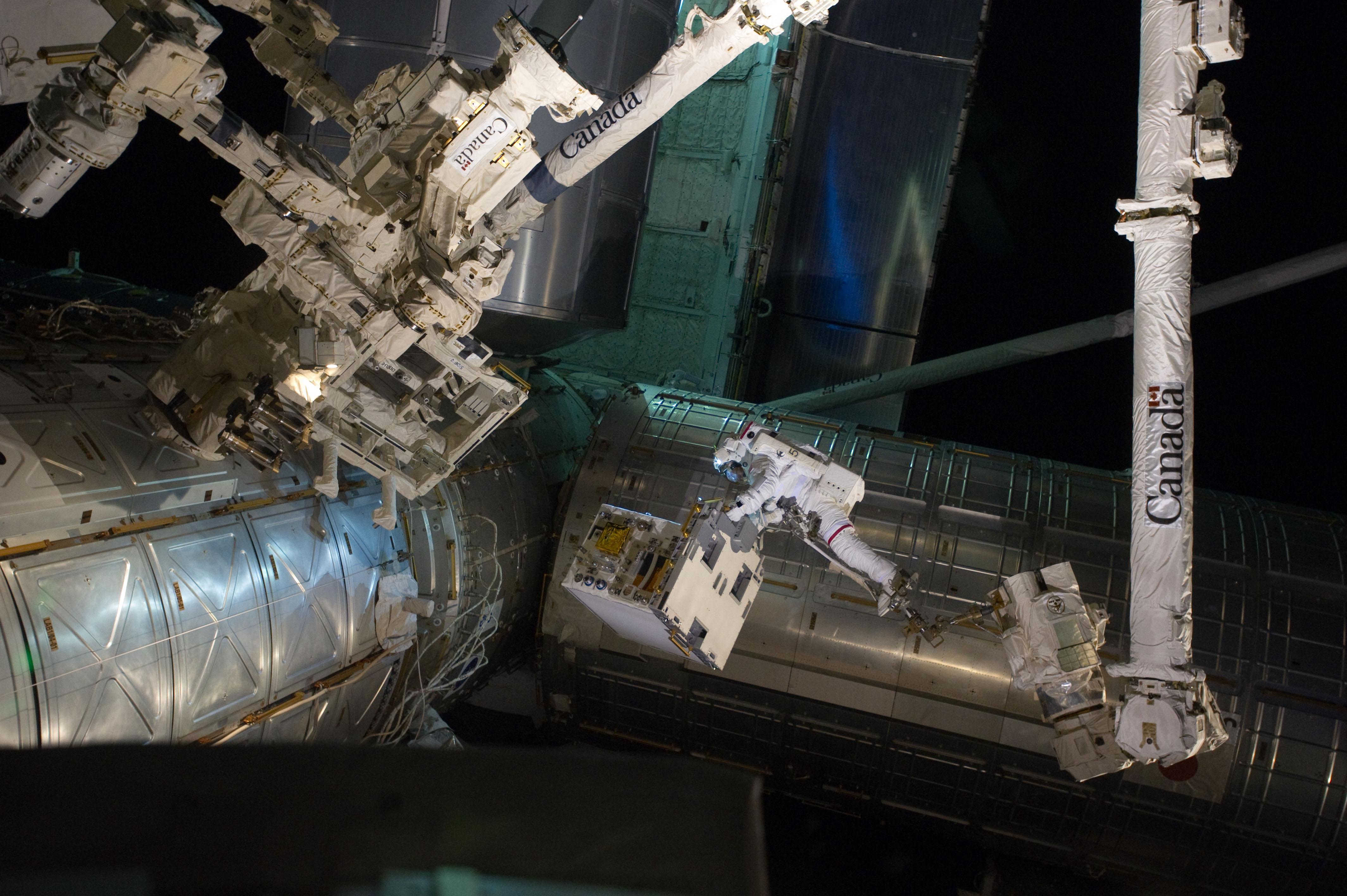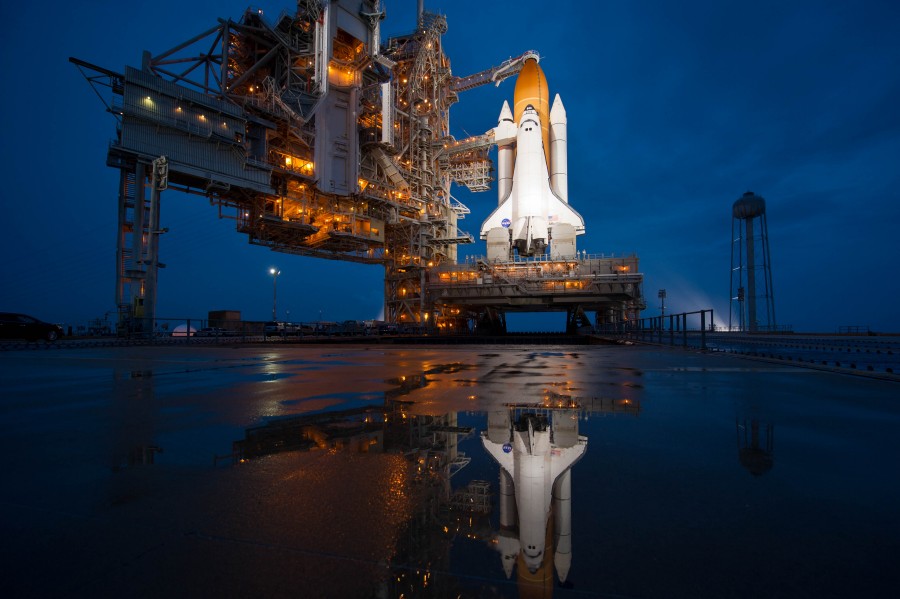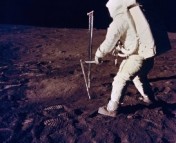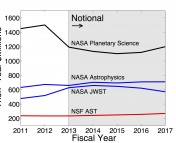
The STS-135 crew. From left to right: mission specialist Rex Walheim, pilot Doug Hurley, commander Chris Ferguson, and mission specialist Sandy Magnus. Image credit: NASA
Forty-two years ago today, Neil Armstrong and Buzz Aldrin made history by becoming the first people to walk on the surface of the Moon while Michael Collins provided valuable support from orbit. Tomorrow, the four members of the crew of STS-135 (Chris Ferguson, Doug Hurley, Rex Walheim, and Sandy Magnus) will enter the record books as the last four people to fly a shuttle mission. After completing 33 missions, the space shuttle Atlantis is scheduled to land at Kennedy Space Center in Florida at 5:56 AM on Thursday, July 21. Astrobites readers in Florida might be lucky enough to hear the shuttle overhead as it comes in for landing and the rest of us can watch the landing live on NASA TV.
If the weather is bad at Kennedy during the first landing attempt, the shuttle could land at Kennedy one orbit later at 7:32 AM. There are additional landing opportunities on Friday and Saturday at Kennedy as well as at Edwards Air Force Base in California or White Sands, New Mexico. The deorbit burn times and the landing times for those opportunities can be found at Spaceflight Now’s STS-135 Mission Status Center page.
The STS-135 Mission
The primary goals of Atlantis’s last flight were to stock the International Space Station (ISS) with supplies, retrieve a failed pump from the station, and fly the Robotic Refueling Mission to demonstrate that robots could refuel satellites in space. The shuttle docked to the station on Sunday, July 10 (Day 3 of the mission), and the shuttle crew was welcomed aboard the ISS by the six members of the Expedition 28 Crew: Andrey Borisenko, Alexander Samokutyaev, Mike Fossum, Satoshi Furukawa, Ron Garan, and Sergei Volkov.
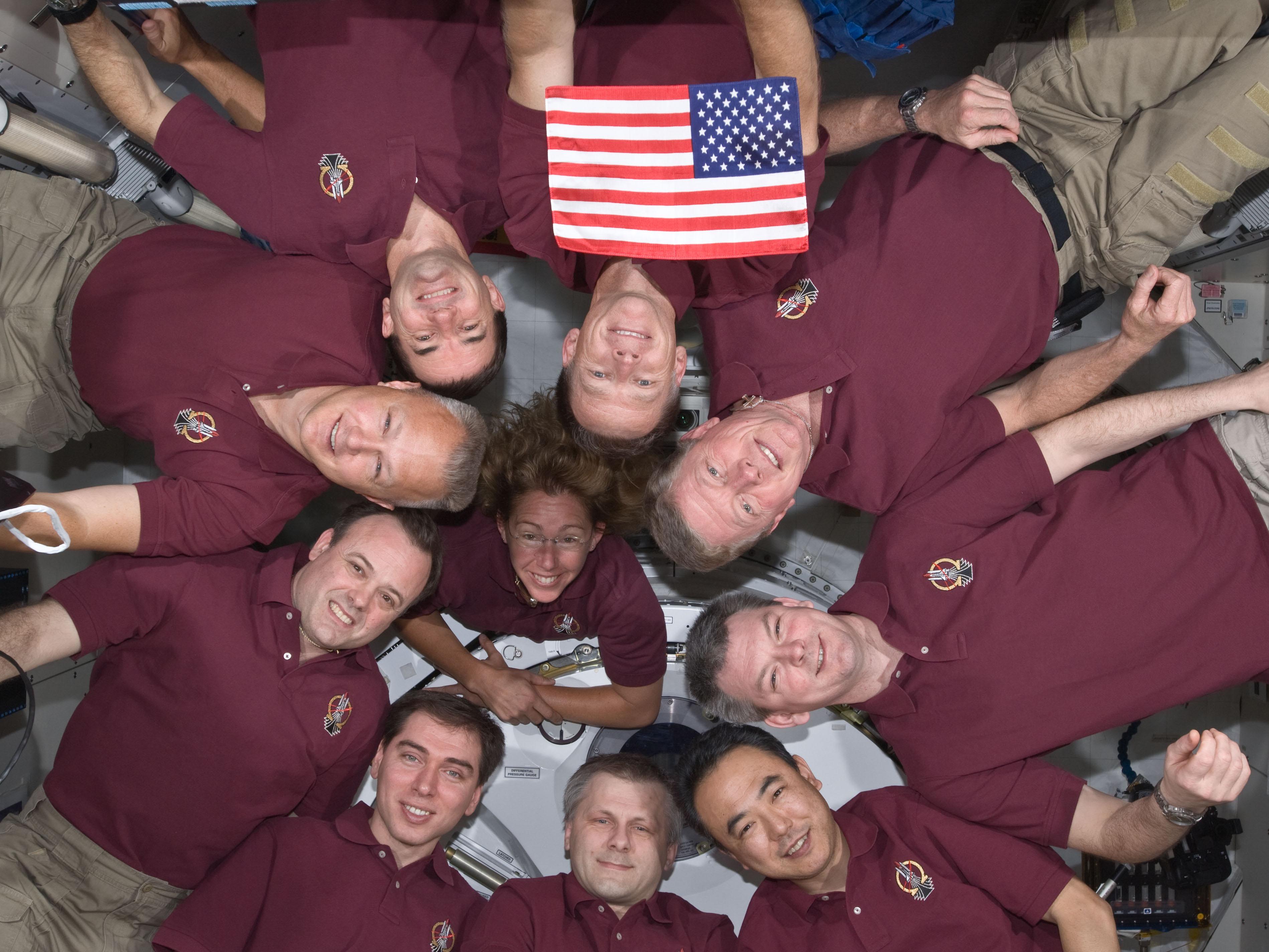
The STS-135 crew with the station crew. The flag was flown 30 years ago on the first shuttle mission and will be retrieved by the next crew to reach the station after launching from the U.S. Image credit: NASA
On Day 4, the crew used the robotic arm to move the Raffaello multi-purpose logistics module from shuttle’s cargo bay to the Harmony node of the station. After Raffaello was docked to the station, the crew began unloading 9,402 pounds of supplies from Raffaello and 2,2891 pounds of supplies from the shuttle’s middeck.
Expedition 28 crew members Mike Fossum and Ron Garan took a walk on the wild side on Day 5 to remove a failed pump module, repair a base for the Canadarm2 (the robotic arm on the station), and deploy an experiment designed to study the performance of optical reflectors in space. Fossum and Garan spent six hours, 31 minutes outside of the station and they were assisted by Doug Hurley and Sandra Magnus, who operated the Canadarm2 from inside the station.
On Days 6 through 10, the crew continued transferring supplies from Raffaello to the station and began reloading Raffaello with 5,666 pounds of trash and unneeded equipment from the station to be returned to Earth. The crew also made repairs on the station, took microbial air samples, resized space suits, and spoke with reports, students, and President Obama.
The crew used the Canadarm2 to transfer Raffaello back to the shuttle’s cargo bay on Day 11 and undocked from the station at 1:28 AM on Tuesday, July 19 (Day 12). The station rotated as the shuttle flew around that station, allowing the shuttle crew to photograph the condition of the station. Later in the day, the shuttle crew used the shuttle’s robotic arm to inspect the condition of the shuttle to check for tile damage before landing.
The crew is sleeping now and will be awoken tonight to begin their final day in space. Earlier in the mission they were woken up by Elton John, Beyonce, Michael Stipe of R.E.M., and Sir Paul McCartney, so tonight’s wakeup call promises to be a show-stopper.
Good luck, Atlantis and thank you to everyone involved in the shuttle program for everything you have accomplished over the last thirty years!

